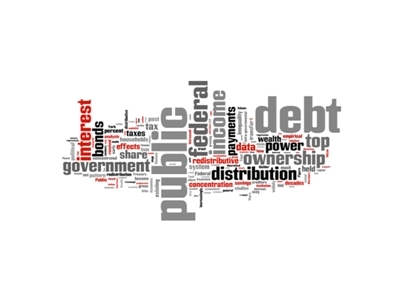Public Debt, Ownership and Power: The Political Economy of Distribution and Redistribution
Hager, Sandy Brian.
(2013).
Unpublished PhD Dissertation. Political Science. York University.
(Thesis; English).
![[thumbnail of 20131000_hager_phd_front.jpg]](/382/1.hassmallThumbnailVersion/20131000_hager_phd_front.jpg)  Preview |
Cover Image
20131000_hager_phd_front.jpg Download (33kB) | Preview |
Preview |
PDF (Full Text)
20131000_hager_phd.pdf Download (1MB) | Preview |
Abstract or Brief Description
This dissertation offers the first comprehensive historical examination of the political economy of US public debt ownership. Specifically, the study addresses the following questions: Who owns the US public debt? Is the distribution of federal government bonds concentrated in the hands of a specific group or is it widely held? And what if the identities of those who receive interest payments on government bonds are distinct from those who pay the taxes that finance the interest payments on the public debt? Does this mean that the public debt redistributes income from taxpayers to public creditors? Who ultimately bears the burden of financing the public debt?
Despite centuries of debate, political economists have failed to come to any consensus on even the most basic facts concerning ownership of the US public debt and its potential redistributive effects. Some claim that the public debt is heavily concentrated and that interest payments on government bonds redistribute income regressively from poor to rich. Others insist that the public debt has become very widely held and instead redistributes income progressively. The lack of consensus, I argue, boils down to both the empirical and theoretical problems that plague existing studies.
Empirically, only a handful of studies have attempted to map the ownership pattern of US federal government bonds, and even fewer have made efforts to measure the redistributive effects associated with a given ownership pattern. And to make matters worse, those few studies that do attempt to map the pattern of US public debt ownership make little effort to theorize in any systematic way the distributive and redistributive dimensions of the public debt.
Anchored within a ‘capital as power’ theoretical framework, my purpose in this is to shed some much-needed light on the dynamics of distribution and redistribution that lie at the heart of the public debt. I show for the household and corporate sectors how over the past three decades, and especially in the context of the current crisis, the ownership of federal bonds and federal interest has become rapidly concentrated in the hands of dominant owners, the top 1% of households and the 2,500 largest corporations. Over the same period the federal income tax system has done little to progressively redistribute the federal interest income received by dominant owners. In this way, this dissertation argues that, since the early 1980s, the public debt has come to reinforce and augment the power of those at the very top of the hierarchy of social power.
[This thesis was nominated for the York University Dissertation Prize.]
Language
EnglishPublication Type
ThesisKeywords
capital distribution economic policy interest ownership power public debt spending state subsidies tax United StatesSubject
BN Money & FinanceBN State & Government
BN Distribution
BN Power
BN Business Enterprise
BN Capital & Accumulation
BN Region - North America
BN Class
Depositing User
Jonathan NitzanDate Deposited
04 Nov 2013Last Modified
09 Apr 2016 21:41URL:
https://bnarchives.net/id/eprint/382Commentary/Response Threads
- Hager, Sandy Brian Public Debt, Ownership and Power: The Political Economy of Distribution and Redistribution. (deposited 04 Nov 2013) [Currently Displayed]
Actions (login required)
 |
View Item |
